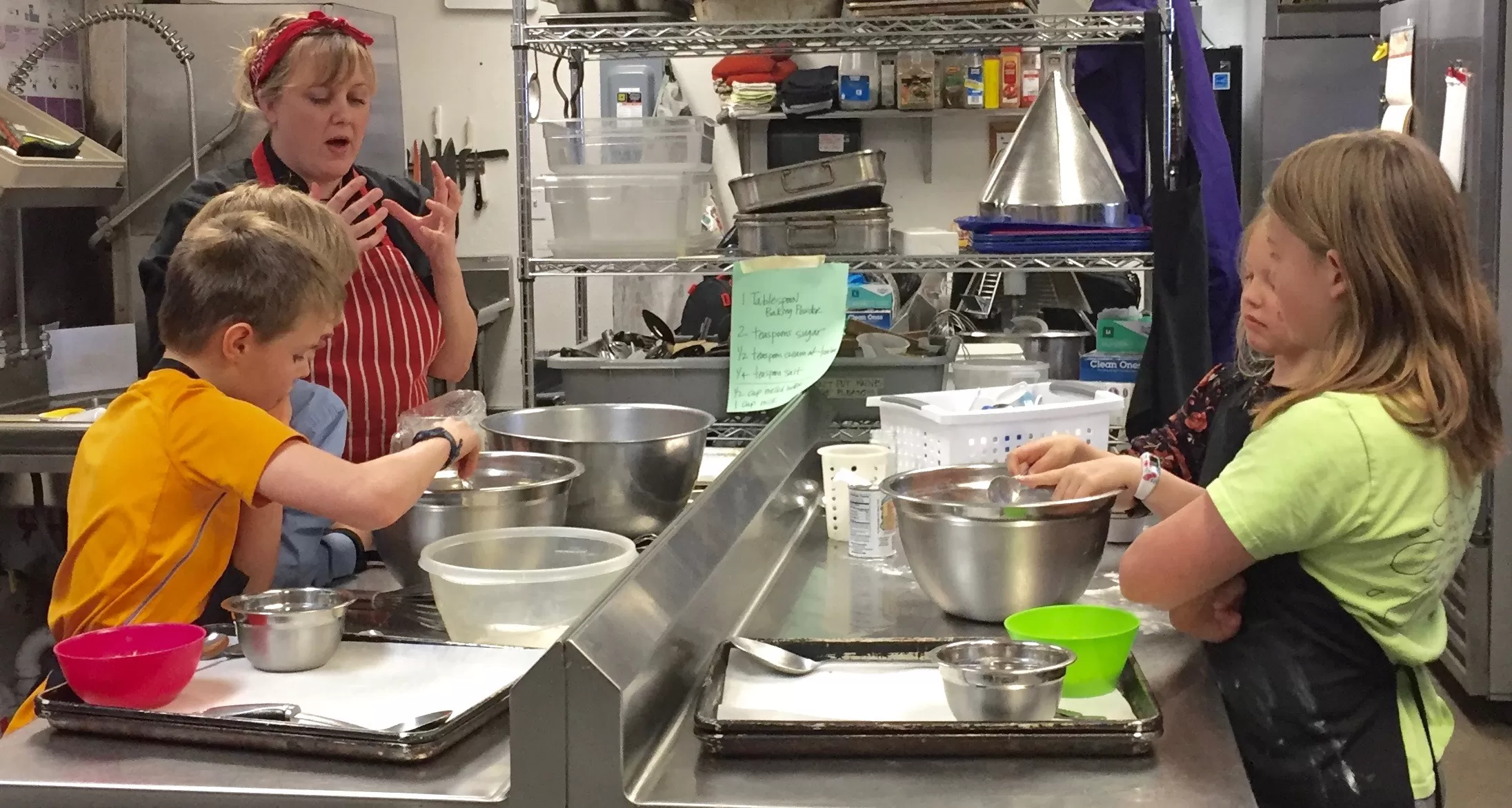There is very little about cooking that doesn’t involve chemistry, biology, physics and math. This term’s cooking elective in the kitchen called for the 4th and 5th graders to “get their geek on” and explore simple recipes with scientific explanations. Complicated science questions (what makes biscuits fluffy? Why does canning preserve food? Why do we love smoky flavors? Etc.) could all be answered in a 45-minute experiment, and we were rewarded with eating our hard work!

Here is a fun experiment to try at home:
Supplies:
Dried popcorn on the cob
Butter or oil
Salt and Pepper
2 brown lunch sacks
1.) Lather the dried popcorn on the cob with butter or oil (use coconut for a healthy alternative and sweet flavor)
2.) Place the lathered popcorn in a brown paper sack, and cover the opened end with the second sack.
3.) Pop in the microwave for about 4 minutes, or until there are two seconds between pops.
4.) Season and enjoy!
Points for discussion: Water inside the kernel turning into steam, steam getting trapped, causing an “explosion”, the sizes, shapes, and colors, and of course, taste testing.



